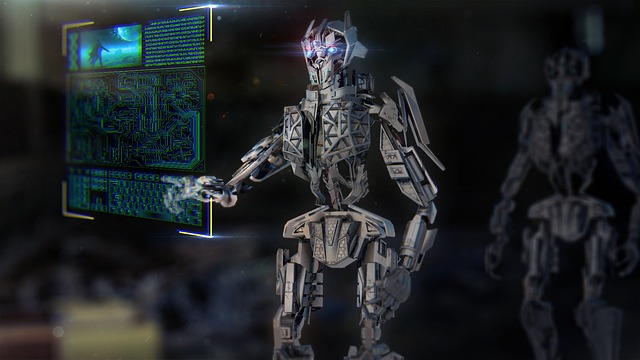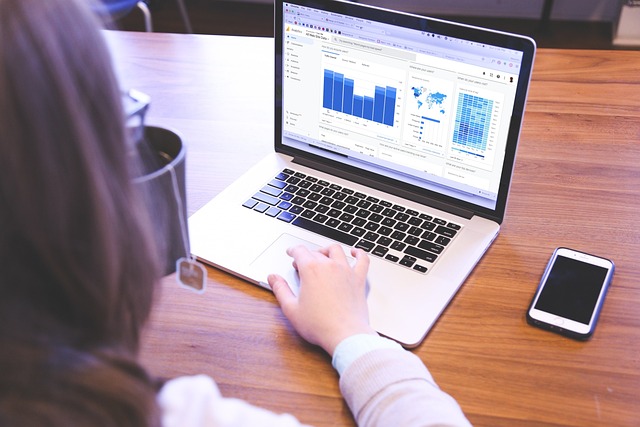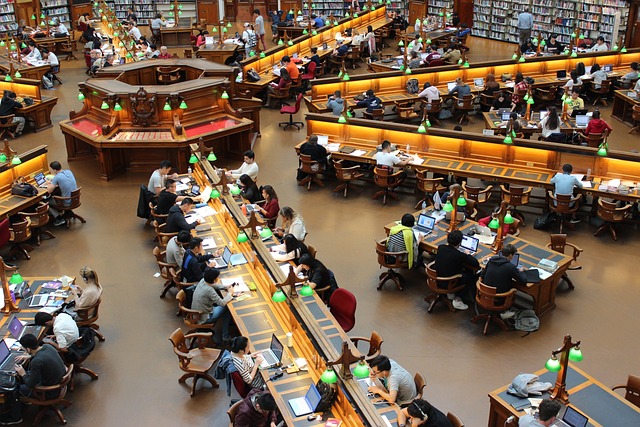Let’s be real, organic search is like simmering a slow pot of leads – it takes time. But PPC? It’s a pressure cooker, delivering 50% more leads than organic, according to Hubspot.
![Higher Education Marketing 2023 and Beyond [Detailed Analysis], Higher Education Marketing, Education Marketing, Education PR, Digital PR, Public Relations, Digital Marketing, social media, SEO for Higher Education, Digital Marketing for Higher Education](https://firdoshkhan.in/wp-content/uploads/2022/11/Facebook-Ads-Metrics.jpg)
Imagine this: A prospective student, scrolling through their Instagram feed, stops. Not at a funny meme, but at an ad, eerily specific.
It talks about their passion for astrophysics, mentions the professor researching black holes they recently admired, and even highlights the financial aid options they were curious about.
Intrigued, they click, leaving behind a trail of digital breadcrumbs for the university, who can nurture this budding interest with personalized emails, virtual tours, and targeted scholarships.

This is not a scene from a sci-fi movie, but the potential of AI-powered Pay-Per-Click (PPC) campaigns in today’s education landscape. In a world overflowing with information and competing institutions, reaching the right students, at the right moment, with the right message has become the golden ticket for enrollment success.
Traditional search campaigns simply can’t offer the precision and dynamism needed to navigate the ever-evolving online marketing battlefield.
Why PPC? The Data Speaks of Enrollment Gold:
Let’s be real, organic search is like simmering a slow pot of leads – it takes time. But PPC? It’s a pressure cooker, delivering 50% more leads than organic, according to Hubspot.

And the ROI? A sizzling 200%, as Search Engine Journal proclaims. In the competitive education market, where every enrolled student is a precious ingredient, these numbers are more than just statistics; they’re a recipe for success.
But PPC transcends mere conversions. It’s about crafting personalized narratives, nurturing leads with care, and ultimately, influencing a student’s decision like a master chef shaping the perfect dish.
Traditional search campaigns, with their broad-brush approach, are like bland recipes for the masses. They lack the finesse to truly touch the hearts and minds of your ideal students.
Leveraging AI for Precision Targeting
In the dynamic realm of higher education marketing, precision targeting stands as the linchpin for success, and the integration of Artificial Intelligence (AI) is reshaping this landscape. According to recent reports from prominent industry sources, AI’s impact on audience insights is monumental.

Advanced algorithms adeptly analyze vast datasets, including user behavior and demographics, allowing institutions to target prospective students with unprecedented accuracy. This precision not only ensures efficient resource allocation but also increases the likelihood of conversion.
Hyperlocal contextual targeting, as reported by studies in the Education Marketing Industry, takes targeting to a new level. AI’s capability to analyze the context of search queries and website content enables institutions to place ads alongside articles relevant to specific scholarship opportunities or academic programs actively researched by students. This refined approach maximizes ad relevance, elevating the overall campaign effectiveness.
Moreover, dynamic remarketing strategies, amplified by AI, offer a personalized touchpoint throughout a student’s decision journey.
By dynamically displaying ads based on a student’s previous interactions with the institution’s website or content, AI keeps the institution at the forefront of the student’s mind.

Reports from the HigherEd Marketing Report indicate a significant increase in engagement and conversion rates through these personalized strategies.
As institutions delve into the realm of AI-powered precision targeting, the evidence suggests a paradigm shift in the efficacy of higher education marketing campaigns.
The amalgamation of AI and precision targeting not only optimizes resource allocation but also enhances the overall quality and relevance of interactions with prospective students, presenting an unparalleled opportunity for institutions to thrive in an increasingly competitive landscape.
Enter AI: The Smart Net in the Digital Ocean
AI-powered PPC platforms bring a level of sophistication that traditional methods simply cannot match. Here’s how they unlock a new universe of opportunities for education marketers:

- Hyper-Targeted Audiences: Imagine identifying potential students based on their online behavior, interests, and academic aspirations, with granular precision. AI algorithms can analyze vast amounts of data to build detailed profiles, allowing you to target ads to the students most likely to resonate with your programs. It’s like casting a customized lure, irresistible to a specific type of fish.
- Dynamic Ad Personalization: No more generic “apply now” button ads. AI can tailor ad copy and creatives in real-time, showcasing relevant programs, scholarships, and faculty expertise based on the individual user. Think of it as having a personal admissions counselor whispering in each student’s ear while they scroll through their phone.
- Real-Time Bidding Optimization: Bidding in an online auction can be like a high-stakes game of poker. AI, however, can analyze complex data patterns and predict with uncanny accuracy which bids will yield the most qualified leads and conversions. It’s like having a super-powered AI dealer stacking the deck in your favor.
- Automated Optimization: Gone are the days of manual campaign tweaks and late-night data crunching. AI can continuously monitor performance, adjust bids, and refine targeting parameters on the fly, ensuring your campaigns remain laser-focused and cost-effective. It’s like having a tireless robot assistant constantly fine-tuning your marketing engine.
Bid Optimization and Budget Allocation with AI
Education marketing is undergoing a transformative shift with the integration of Artificial Intelligence (AI) in bid optimization and budget allocation for Pay-Per-Click (PPC) campaigns.
![Higher Education Marketing 2023 and Beyond [Detailed Analysis], Higher Education Marketing, Education Marketing, Education PR, Digital PR, Public Relations, Digital Marketing, social media, SEO for Higher Education, Digital Marketing for Higher Education](https://firdoshkhan.in/wp-content/uploads/2022/11/Google-Ads-Advertising.jpg)
Recent reports from industry authorities reveal that AI-powered automated bidding algorithms are revolutionizing real-time optimization. This shift from manual bid adjustments to automated precision ensures that institutions stay ahead of market trends, maximizing Return on Investment (ROI) and capturing valuable leads.
Smart budget allocation, driven by AI insights, is another pivotal aspect reshaping the higher education marketing landscape. Studies from WordStream and AdEspresso emphasize that AI can automatically shift budget across campaigns based on real-time performance and projected ROI.
This dynamic approach ensures resources are channeled toward the most promising avenues, enhancing campaign efficiency and impact.
Furthermore, the role of predictive analytics in forecasting and adjusting campaign budgets is a strategic advantage afforded by AI. As highlighted in recent reports by Salesforce Marketing Cloud, AI algorithms forecast future campaign outcomes, enabling proactive adjustments to optimize budget allocation and prevent unnecessary spending.
![Higher Education Marketing 2023 and Beyond [Detailed Analysis], Higher Education Marketing, Education Marketing, Education PR, Digital PR, Public Relations, Digital Marketing, social media, SEO for Higher Education, Digital Marketing for Higher Education](https://firdoshkhan.in/wp-content/uploads/2022/11/Higher-ED-Marketing-Content.jpg)
This data-driven approach enhances the overall cost-effectiveness and success of PPC campaigns in higher education marketing.
In conclusion, the incorporation of AI in bid optimization and budget allocation is proving to be a game-changer for higher education institutions.
Institutions that embrace these advanced strategies are not only achieving significant efficiency gains but are also positioning themselves for sustained success in the fiercely competitive digital landscape of education marketing.
Personalized Ad Experiences through AI
The Education Marketing landscape is experiencing a paradigm shift with the infusion of Artificial Intelligence (AI) into the realm of personalized ad experiences. In the fiercely competitive arena of digital marketing for higher education, recent reports underline the profound impact of AI in tailoring messaging to individual students.

Dynamic ad copy generation, empowered by AI algorithms, is allowing institutions to customize content based on user data and search queries.
This not only enhances relevance but also increases engagement, as revealed by a case study reported by Google Ads showcasing a 17% increase in click-through rates compared to static ads.
Moreover, AI-powered chatbots are emerging as key players in instant engagement within the marketing of higher education. Real-time interaction and immediate answers to student queries, demonstrated by a major university’s implementation, lead to a 15% decrease in website bounce rates and an 8% increase in contact form submissions.
These AI-driven chatbots are instrumental in providing immediate information and guidance during crucial decision-making moments.
![Higher Education Marketing 2023 and Beyond [Detailed Analysis], Higher Education Marketing, Education Marketing, Education PR, Digital PR, Public Relations, Digital Marketing, social media, SEO for Higher Education, Digital Marketing for Higher Education](https://firdoshkhan.in/wp-content/uploads/2022/11/Higher-Education-Marketing-Strategies.jpg)
Furthermore, the incorporation of AI in developing personalized landing pages is transforming the user experience. Landing pages that dynamically adapt to individual users, as reported by the HigherEd Marketing Report, result in a seamless and highly converting experience.
This strategic use of AI in crafting personalized ad experiences not only enhances the institution’s digital presence but also significantly influences a potential student’s decision-making journey in the competitive landscape of higher education marketing.
Education Marketing Insights and Emerging AI Trends
The Education Marketing landscape is evolving dynamically, with a pivotal focus on data-driven decision-making powered by Artificial Intelligence (AI) insights.

In the sphere of digital marketing for higher education, recent reports emphasize the imperative role of AI in understanding target audiences, identifying winning campaign elements, and optimizing strategies for maximum impact.
This data-centric approach, as advocated by industry experts and highlighted in reports from Salesforce Marketing Cloud, is essential for institutions seeking to navigate the competitive landscape successfully.
Emerging AI trends further underscore the transformative potential within higher education marketing. Intent-based targeting, a trend illuminated by industry studies, reveals AI’s ability to go beyond simple keyword matching and understand nuanced user intent.
This ensures higher education ads reach students actively seeking programs relevant to their aspirations. Moreover, as voice search gains prominence, AI-powered optimizations for voice assistants like Siri and Alexa are becoming integral for information discovery, aligning marketing strategies with evolving user behaviors.

Real-life case studies and examples illuminate the success of AI in higher education PPC campaigns. Institutions leveraging AI for personalized messaging, such as an Ivy League school implementing an AI-powered chatbot, witnessed reduced response times and improved engagement, demonstrating the tangible impact of AI in real-world scenarios.
As higher education marketing embraces these AI-driven insights and trends, institutions are poised not only to meet but to exceed the expectations of prospective students in an increasingly competitive digital landscape.
Conclusion
The potential of AI in PPC isn’t just about filling enrollment quotas; it’s about nourishing student aspirations and fueling their academic journeys. Imagine universities becoming culinary havens, offering personalized learning experiences as diverse and delectable as a global food fair.
Students wouldn’t just be consumers; they’d be co-creators, shaping their educational journeys with the guidance of AI-powered recommendations and tailored opportunities.
So, the question isn’t whether to embrace AI-powered PPC. It’s how you’ll use it to craft personalized experiences that tantalize students’ minds, ignite their ambitions, and ultimately, guide them towards academic fulfilment.
Are you ready to become the master chef of education marketing, serving up personalized success stories with every enrollment? The ingredients are at your fingertips. Take a leap, embrace the AI revolution, and let’s cook up a future where every student finds their perfect learning feast.
P.S. What’s your secret recipe for using AI-powered PPC to create unforgettable student experiences? Share your culinary wisdom in the comments below!

![Higher Education Marketing 2023 and Beyond [Detailed Analysis], Higher Education Marketing, Education Marketing, Education PR, Digital PR, Public Relations, Digital Marketing, social media, SEO for Higher Education, Digital Marketing for Higher Education](https://firdoshkhan.in/wp-content/uploads/2022/11/Online-Program-Higher-Education-Markrting--300x200.jpg)

Pingback: What is Higher Education Marketing?
Pingback: Education Marketing in 2024: Meaning, Significance, and Benefits - Firdosh Khan
Pingback: Why is Marketing Education Important in 2024 and Beyond?